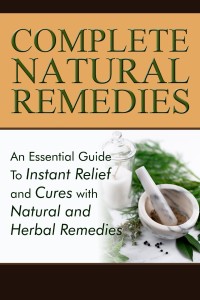 Individuals who have the flu will suffer from high fevers, headache, extreme tiredness, dry cough, sore throat, runny or stuffy nose and muscle aches. Other symptoms, such as stomach aches, nausea, vomiting and diarrhea, can also occur and are more common in children than in adults. Individuals who suffer from a severe form of the disease can also suffer from complications including bacterial pneumonia, ear infections, sinus infections and dehydration.
Individuals who have the flu will suffer from high fevers, headache, extreme tiredness, dry cough, sore throat, runny or stuffy nose and muscle aches. Other symptoms, such as stomach aches, nausea, vomiting and diarrhea, can also occur and are more common in children than in adults. Individuals who suffer from a severe form of the disease can also suffer from complications including bacterial pneumonia, ear infections, sinus infections and dehydration.
The flu gets its name from the virus which causes the illness, influenza. These respiratory diseases are caused by influenza A or influenza B viruses and are frequently more active in the winter and early spring. Scientists recognize a pattern of activity and pinpoint other means of prevention and treatment based on the activities of individuals. For instance, recent research has indicated that individuals who receive high amounts of vitamin D through sunshine exposure during the winter and early spring will significantly reduce their risk of contracting the influenza virus even if exposed. (4,5,6)
Although the symptoms of a cold and the flu are similar the symptoms of the flu are much worse. While a cold may make you feel dragged down, the flu will make it almost impossible for you to get out of bed. There are more than a hundred different types of cold viruses that are known to researchers today and new strains of the flu evolve every few years. This is why the flu vaccine must change every few years in order to keep up with the new strains that are developing. Unfortunately, scientists are unable to anticipate the genetic mutations which the flu virus undergoes and must vaccinate individuals based on the influenza virus from the previous year’s season.
Resources:
(1) Centers for Disease Control and Prevention: Get Smart: Know When Antibiotics Work
http://www.cdc.gov/getsmart/antibiotic-use/know-and-do.html
(2) MayoClinic.com: Antibiotics: Misuse Puts You and Others At Risk
http://www.mayoclinic.com/health/antibiotics/FL00075
(3) Center for Disease Control and Prevention: Key Facts about Influenza (Flu) and Flu Vaccine
http://www.cdc.gov/flu/keyfacts.htm
(4) The American Journal of Clinical Nutrition: Randomized Trial of Vtiamin D Supplementation to Prevent Seasonal Influenza A in Schoolchildren
http://www.ajcn.org/content/early/2010/03/10/ajcn.2009.29094.abstract
(5) Mercola.com: The vitamin Which Can Cut Your Flu Risk Nearly In Half
(6) The Vitamin D Council: H1N1 Flu and Vitamin D
http://www.vitamindcouncil.org/news-archive/2009/h1n1-flu-and-vitamin-d/
| Advertisement | |
 |
|


Leave a Reply